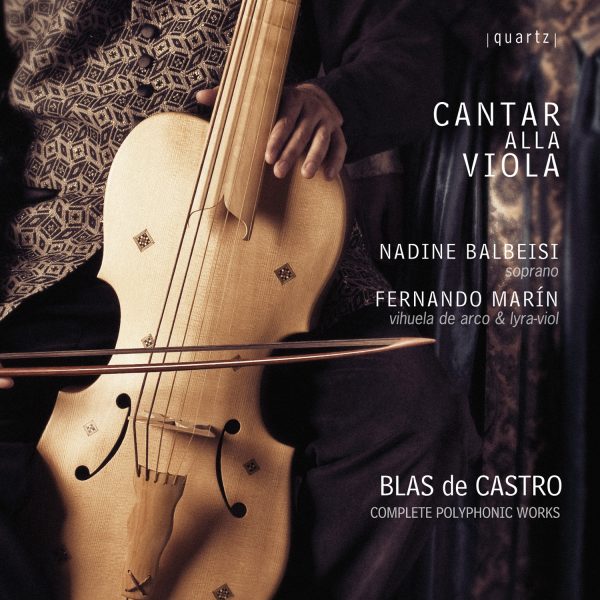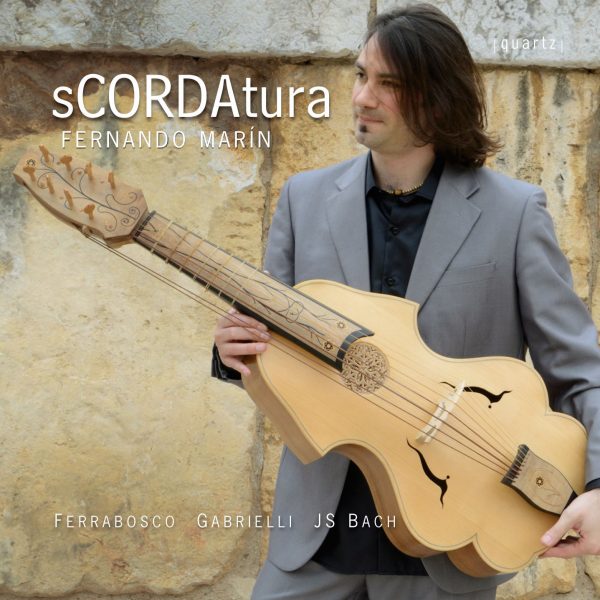Segreti Accenti
Price range: £7.99 through £14.99
Italian Renaissance Music
Cantar alla Viola
This CD is dedicated to one of the most esteemed musical practices of the Renaissance: the art of accompanying the voice with the viola da gamba. Cantare alla viola (singing with a viol) is the name for this practice which was quite common at the time.
The art of this practice lies in the ability of the “viola” player to arrange and play madrigals to accompany one single voice, as a lutenist or vihuela player commonly does. Cantar alla Viola has careful selected some of the finest pieces of the Italian Renaissance in order to illustrate the intimate and skillful musical practice of Cantare alla viola. The pieces vary from the subtle and transparent trecento 2-voice ballades of Magister Piero and Andrea da Firenze played on the viella, to the exquisite and virtuous madrigals for one soprano by Luzzascho Luzasschi, accompanied by the viola da gamba. The Renaissance villanelle and 3-voice madrigals by Luca Marenzio and Costanzo Festa, are adapted for the polyphonic playing of two different bowed vihuelas. Solo pieces have been added to the disc to show the instrumental practice on a bowed vihuela through arrangements of lute and keyboard pieces by composers such as Marco Antonio Cavazzoni or Francesco da Milano.
About This Recording
This CD is dedicated to one of the most esteemed musical practices of the Renaissance: the art of accompanying the voice with the viola da gamba. Cantare alla viola (singing with a viol) is the name for this practice which was quite common at the time. Even Baldassare Castiglione, in his work, The Book of the Courtier, (Venice, 1528), points out that among all musical practices, the best and most suitable for a perfect courtier was indeed cantare alla viola. He goes on to explain that it makes it possible to appreciate “all the sweetness” that is found in the solo voice. One singer can give more attention to the “fine manner and the melody” as well as offer a certain “grace” to the words that is not possible with many singers.
The art of this practice lies in the ability of the “viola” player to arrange and play madrigals to accompany one single voice, as a lutenist or vihuela player commonly does. Contrary to the lute and plucked vihuela, books of music for this combination have not been found. Detailed instructions, however, endeavoring to master this art, can be found in Sylvestro Ganassi’s treatises, Regola Rubertina, (Venice, 1542) and Lettione Seconda (Venice, 1543).
According to Ganassi, such a practice will be realized in a way that, “observing that it is not its nature, it will need reducing and at times need more than is in the composition.” With this he means that one needs to add or take away that which enables the adaptation of the madrigal to accommodate the practice of the viol. The strings “that are the most consonant are able to sustain the harmony as well as the texts and such.”
Concurring with the Renaissance aesthetic ideal of imitating the voice, Ganassi goes further than just guiding the viol player on the technicalities of arranging madrigals, by giving instructions on the various possibilities of interpretation and expression. He compares the viol player to an orator who, “with the boldness of exclamation, gestures and movements” must always try to imitate laughing, crying and all “effects put into the music through the words” that may be in the text. In order to create the effect of sad or “afflicted” music, one must move the bow in a slurred way, even shaking the bow, while the left hand should be used in a way of “making a movement and giving spirit” to the instrument relative to that which the music requires. Happy music should be struck by the bow in a way proper to such music. (Regola Rubertina, chap. II, f. VI)
In his treatise Regola Rubertina, Ganassi offers us an example of a madrigal set in tablature to be sung and played with the “viola”, which stands as the only known evidence of this musical practice. In this CD we are including this version of the mentioned madrigal: Io vorrei Dio d’amore, in honor and appreciation of Ganassi’s art which has inspired and influenced our interpretation of this music.
We have carefully selected some of the finest pieces of the Italian Renaissance in order to illustrate the intimate and skillful musical practice of cantare alla viola. The pieces vary from the subtle and transparent trecento 2-voice ballades of Magister Piero and Andrea da Firenze played on the viella, to the exquisite and virtuosic madrigals for one soprano by Luzzascho Luzasschi, accompanied by the viola da gamba. The Renaissance villanelle and 3-voice madrigals by Luca Marenzio and Costanzo Festa, are adapted for the polyphonic playing of two different bowed vihuelas. Solo pieces have been added to the disc to show the instrumental practice on a bowed vihuela through arrangements of lute and keyboard pieces by composers such as Marco Antonio Cavazzoni or Francesco da Milano.
The Duo Cantar alla Viola has devoted more than twelve years of research and interpretation to rediscover this exquisite musical practice: singing with a “viola”. The implementation of different kinds of viols used to accompany the voice, such as the Spanish Vihuela de arco (the bowed vihuela) and the English Lyra-viol, has opened up a wide variety of repertoire ranging from trecento to early baroque. All instruments used have been historically reproduced, consistent with the shapes and dimensions as well as building techniques of original instruments. Historical bows and strings are just as carefully researched and selected. The harmonies of the instrument are sustained by using a special bow technique, which creates a sound that mixes well with the human voice. Cantar alla Viola has performed in festivals and concert series in the US, Belgium, Germany, Spain, and the Czech Republic and is particularly dedicated to performing and bringing lesser- known composers to the wider public. The duo has released a number of critically acclaimed CDs: The Complete Polyphonic Works of Juan Blas de Castro (1561 – 1631), Robert Jones: The Second Booke of Songs and Ayres (1601), and The Vihuela de arco in the reign of Aragon. In commemoration of the 400th year anniversary of the Second Book of Songs and Ayres (1612) by William Corkine, Cantar alla Viola released the CD Each Lovely Grace.
Track Listing
- Luzzascho Luzzaschi: Aura soave (3.52)
- Luca Marenzio: Amor tien il suo regno (4.11)
- Costanzo Festa: Se mai vedet amanti (2.26)
- T. Crecquillon - L. Venegas de Henestrosa: Mort Ma Prive par sa Cruèlle (3.19)
- Andrea da Firenze: Amor, I´mi lamento (2.47)
- Luca Marenzio: Lasso non è cor mio (4.41)
- Sylvestro Ganassi: Io vorrei dio d’Amore (2.18)
- Luca Marenzio: Con la fronte fiorita (2.42)
- Luca Marenzio: Al primo vostro sguardo (3.30)
- Luca Marenzio: Dicemi la mia stella (2.31)
- Marco Antonio Cavazzoni: Ricercare Tono II (3.59)
- Magister Piero: Ogni diletto (3.14)
- Costanzo Festa: Altro non eil mi amor (3.15)
- Luzzascho Luzzaschi: O primavera (3.25)
- Luca Marenzio: Alma che fai (2.24)
- Luca Marenzio: Le rose fronde e fiori (2.30)
- Luca Marenzio: Ahime che col fuggire (2.47)
- Francesco da Milano: Ricercare VII (2.05)
- Magister Piero: Chavalcando con un giovine accorto (3.35)
- Costanzo Festa: Madonnio mi consumo et pel grave dolor (2.57)
- Luzzascho Luzzaschi: Chio non t'ami (4.18)



